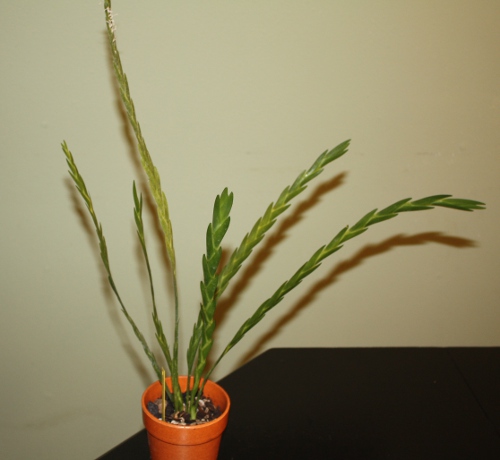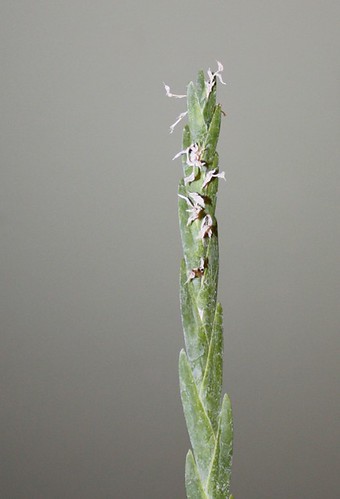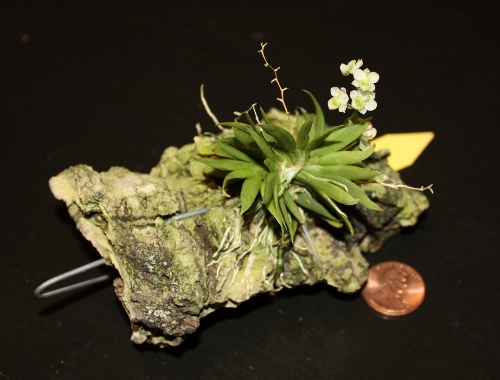My parents-in-law were out of town for a month while my father-in-law was cycling from Seattle to Los Angeles. While they were away, we were in charge of keeping their pups and orchids alive. Mission successful: all survived.
One of the orchids came into bloom just before they came home,
Eulophia streptopetala. My mother-in-law bought this orchid while she was in California last year at Santa Barbara Orchid Estate. She purchased this particular orchid because of it is native to Ethiopia, the country from which we are adopting.
 |
| Eulophia streptopetala first blooms. Sorry the picture is out of focus. Once again, this is on my camera phone and I couldn't tell it missed the focus point. |
While I was excited about the orchid blooming for the first time, they were back at the Santa Barbara Orchid Estate again. They brought home three new orchids, two for me, in thanks for taking care of the orchids!
 |
| Lockhartia oerstedii |
 |
| Lockhartia oerstedii spent blooms |
The first orchid has a really unique growth habit. It is a species orchid,
Lockhartia oerstedii, from central America. When I looked up the description of this plant I learned a couple new botanical vocabulary words. The first is
imbricate, which refers to the overlapping leaves which look like roof shingles or reptile scales. A second word is
caespitose, which means densely clumped.
 |
| Cirrhopetalum makoyanum |
The second orchid is the species
Cirrhopetalum makoyanum. The
Cirrhopetalum genus is closely related to the
Bulbophyllum genus, and many of the plants are still labeled with that genus name. It has a very distinct inflorescence, which is made up of several flowers arranged in a semi-circular pattern that look like half to 3/4 of a daisy. You can see a picture
here.
 |
| My mother-in-law's tiny hybrid orchid. Notice the size compared to the penny! |
The last orchid is one that my mother-in-law bought for herself. It is a tiny miniature (Yes, I think it is appropriate to use both words) mounted on cork bark. And it's even in bloom. Check out the penny for size comparison. Pretty incredible, isn't it? I'm really liking these little mounted orchids. They are easy to care for - assuming you don't mind watering them regularly. You don't have to worry about the roots rotting. And since everything is right there on display, you can tell if the roots are healthy or not. Also, it's more appealing to me than a plant in a pot. And you can hang them in all sorts of places. The list goes on and on. Can you tell I like these things? I have a post on my mounted miniatures coming soon. This hybrid is known as a "primary hybrid," which means both parents of this plant are pure species. Anyway, if you've read through this entire paragraph hoping to learn the name of this plant, here's your reward:
Ornithocephalis iridifolius x Zygostatus alleniana. If you were reading the paragraph hoping for some other reward: sorry, that's all you get.







